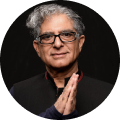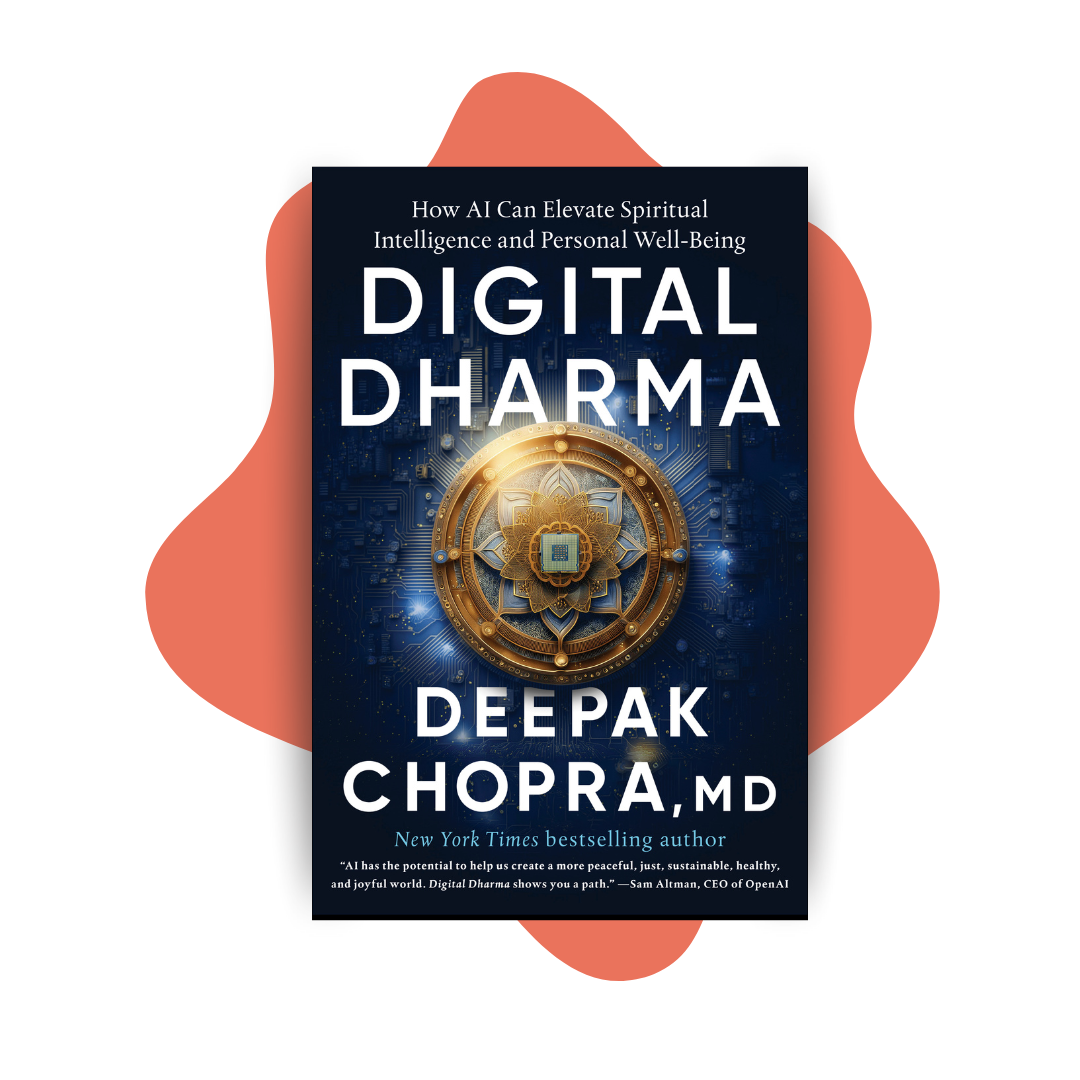Resetting Your Mind for Higher Consciousness.
When your mind and heart are truly open abundance will flow to you effortlessly and easily.
There has never been a better time to reach a state of higher consciousness than now. On the surface this seems like a paradox. Modern secular society is far removed from the pursuit of higher consciousness, whether we call it nearness to God, enlightenment, awakening, or living a saintly life. This has the effect of placing it out of reach of our ordinary life experience.
Putting higher consciousness back into everyday life can happen in our own times, because what is involved is a process that anyone can undertake. The most basic way to define this is as a reset of the mind, and there is abundant evidence about how resetting the mind works—it has similarities to undertaking any project that focuses the mind in a new direction, such as training for a marathon or adopting an anti-aging program, while at the same time there are significant differences.
To begin with, the process requires conscious choices and attitudes, which applies equally to mental health, psychological well-being, and the development of higher consciousness. We can learn to reset our minds to free ourselves from bad habits, emotional toxins, addictions, and blockages that limit our mental acuity, inner peace and lasting happiness.
The obstacles to higher consciousness are mind-made. Fortunately, we can adopt routine measures to empty our minds of their residues of conditioned thinking, obsessions, compulsions, and prejudices. This will help stimulate new creativity, original thinking, a sharper memory, and deeper self-awareness.
First, we must be aware of the forces working against mental well-being. Today our minds are overstimulated, overworked, and easily disturbed in a media-dominated era of constant digital and electronic engagement, along with the habit of persistent worry and concerns about increasing social and world problems. Our minds are subject to stress throughout the day and night. We have little free time to slow down and settle our thoughts and emotions.
Getting out of this cycle of entropy doesn’t happen merely by thinking. It is the thinking mind that traps us in the unconscious forces just listed. Mental clutter and the baggage of memory weigh the mind down, restricting its subtle awareness and getting us caught in outer influences. Trying to cope, going into denial, or distracting yourself doesn’t work, either. You need to notice what is happening “in here,” because noticing is basic to creating change. Conditioned mental reactions prevent us from seeing things directly, while the shadows of memory obscure our inner vision.
We see what we expect to see; we experience things that reinforce our old experiences; we think along lines of settled and fixed beliefs. The result is that we adopt repetitive patterns, missing what life teaches us in our daily situations, relationships, actions, and expressions. If you face this directly, you will realize that your thinking mind doesn’t know how to free your awareness for a new creative way of living. All of this comes under the category of noticing and recognizing.
The next step is to engage in a process for restoring the mind to optimal levels of functioning. Here the resetting begins, not just mystically but in experiential ways that are well studied and verified.
Steps to Reset the Mind
Stop overloading the central nervous system with outer stimulations
Allow the mind to relax and learn to let the mind go
Catch yourself acting or speaking unconsciously and stop
Make room within yourself for your awareness to reach a deeper level
Focus on inner peace, calmness, and a quieted mind, not a reactive mind
Get adequate deep sleep every night
Take practical steps to reduce stress at physical and emotional levels
Align your daily activity toward higher values
In their reflective moments most people would agree that these steps represent an improvement in well-being. But inertia and habit are powerful, and it takes conscious attention, operating every day, to fully counter them. There is no simple button we can push to turn the mind off and on again the way we can with a computer. However, there is an inner power we can develop to slow down and stop the mind from going into a default that keeps us trapped in habit, memory, and old conditioning.
This is the power of focused awareness, in which we move from being trapped in our thoughts to calmly observing our thoughts and letting them disperse on their own. This power of awareness is available to everyone. Think of a developmental stage that you consciously participated in. An obvious example is learning to read. No one learned to read by thinking about it. Instead, awareness was focused in a new direction, and by putting daily focus on reading, a new skill was attained, a skill in awareness.
Similarly, higher consciousness requires turning your awareness in a new direction and applying daily focus on it. Here the most potent means at your disposal is deep meditation. The mind requires extended periods of rest to renew itself, in which we disengage from any outer-oriented mental activity and turn the mind back to a state of rest, stillness and silence where it can naturally renew itself.
By putting you in touch with inner silence, meditation takes advantage of how the mind naturally resets itself and fills itself with a new inspiration from within. But this silent mind is not a purposeless or lazy mind. It is a receptive consciousness in which we connect ourselves to the root powers of existence. Being accomplishes what the thinking mind cannot.
To reset the mind, we must develop a conscious state of peace and rest as our default state. With the practice of meditation, the mind learns to relax into a simple state of openness and receptivity without conflict. Being in the state of simple awareness removes the veil of thought by becoming present in your inner being, witnessing life from a place of openness and observation. If we let things be what they are, this power of observation will allow us to reset our minds from the shadows of the past and find new and lasting solutions.
As witnesses we don’t become blank; we take our minds back to their ground zero, their core point of silence, centering, and stillness. As it turns out, the mind’s place of origin is also its ultimate goal. This is the underlying, boundless, self-awareness behind the outward looking thinking mind.
In the Vedic tradition great emphasis is put upon consciousness as a type of space, or Akasha. As we all know, it feels freeing to be given your own space. To renew itself, the mind requires space both within ourselves and in the world around us, experiencing ourselves as a presence or movement in space, not just as a set of mental opinions tied to a physical body. Akasha is accessible between your thoughts as a steady state where you directly perceive what it feels to be fully present here now, which is where higher consciousness develops.
Cultivating this inner silence gave rise, thousands of years ago in India, to many practical tools. One of these, the use of a mantra in meditation, has established itself in the West. So-called seed mantras serve to break down the conditioned patterns of our thoughts, and ease awareness into a settled, one-pointed state without effort. The science of mantra gets very complex, but there are useful mantras anyone can silently repeat in meditation such as Om, Hreem, and So Hum.
Another tool involves controlled breathing, known as Pranayama. The key word here is Prana, which refers to the flow of vital energy at a subtle level. Pranayama has yet to enter Western acceptance and familiarity the way mantras have, but advances are constantly being made, the chief of which focuses on the vagus nerve. The vagus nerve is one of the ten cranial nerves that branch out from the brain to the rest of the body, and stimulating it with controlled, relaxed breathing has been proven to have a regulating effect on breathing, heart rate, and stress reduction.
What we want to leave you with aren’t a wealth of details and choices. Online you can find abundant information about meditating, using a mantra, and Pranayama or vagal breathing. The essence of this article is about resetting your mind for higher consciousness by making the process the core of your personal vision. Such a vision is what makes anyone’s life full of purpose and meaning. In this case envision the highest possibilities that are open to you and everyone. Nothing more beneficial need be imagined or aspired to.
DEEPAK CHOPRA™ MD, FACP, founder of The Chopra Foundation, a non-profit entity for research on well-being and humanitarianism, and Chopra Global, a whole health company at the intersection of science and spirituality, is a world-renowned pioneer in integrative medicine and personal transformation. Chopra is a Clinical Professor of Family Medicine and Public Health at the University of California, San Diego and serves as a senior scientist with Gallup Organization. He is the author of over 90 books translated into over forty-three languages, including numerous New York Times bestsellers. His 90th book and national bestseller, Metahuman: Unleashing Your Infinite Potential (Harmony Books), unlocks the secrets to moving beyond our present limitations to access a field of infinite possibilities. For the last thirty years, Chopra has been at the forefront of the meditation revolution and his latest book, Abundance: The Inner Path to Wealth (Harmony Books) offers the keys to a life of success, fulfilment, wholeness and plenty. TIME magazine has described Dr. Chopra as “one of the top 100 heroes and icons of the century.” www.deepakchopra.com
Dr. David Frawley (Acharya Vamadeva Shastri) is a Vedic teacher and educator who is the author of over fifty books in several Vedic and Yogic fields published worldwide over the past forty years. He is the founder and director of the American Institute of Vedic Studies, which offers on-line courses and publications on Ayurveda, Yoga, Vedanta, mantra and meditation. He is involved in important research into ancient Vedic Sanskrit texts and is a well-known modern exponent of Hinduism and Sanatana Dharma. He has a rare D. Litt in Yoga and Ayurveda and is a recipient of the prestigious Padma Bhushan award, India’s third highest civilian award for “distinguished service of a high order.” His work is highly respected in traditional circles in India, as well as influential in the West, where he is involved with many Vedic and Yogic schools, ashrams and associations. He is one of the main global exponents of Ayurveda for both physical and psychological wellbeing.

